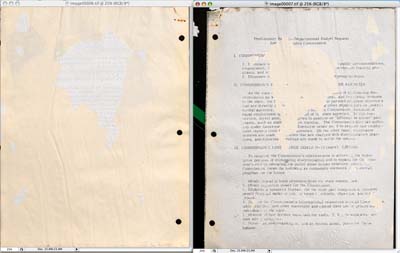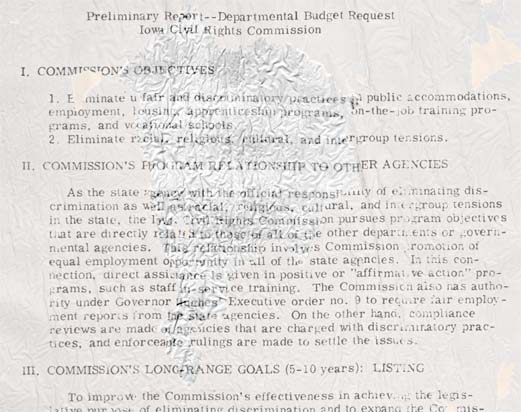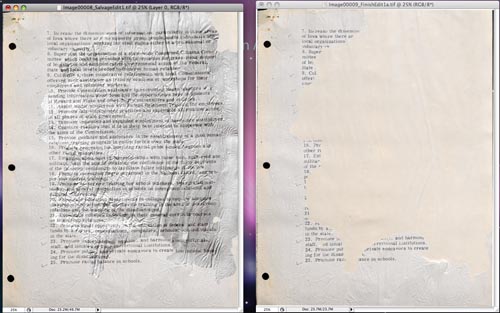Monday, August 3, 2009
Ongoing efforts to clean and flatten flood-affected archives manuscripts from the African American Museum of Iowa have turned up yet another form of adherograph deterioration. (See June 30, 2009 entry)
 As seen in the example to the left, the powder medium that holds the adherograph text image has irreversibly adhered to the back of a preceding document page. Unable to separate the two, I decided to scan both pieces of the damaged document and then attempt to reunite them in Photoshop.
As seen in the example to the left, the powder medium that holds the adherograph text image has irreversibly adhered to the back of a preceding document page. Unable to separate the two, I decided to scan both pieces of the damaged document and then attempt to reunite them in Photoshop.
The first step was to flip the fragment horizontally. Though only the back of the reversed fragment text was visible through the adherograph medium, flipping it over digitally created a faint, though workable positive.
 Note the altered color of the reunited fragment. Through a haphazard process of tweaking color levels and saturations I was able to pull the text out, making it as legible as possible. After doing so, reducing the image from color to black and white serves to isolate the information from the discolored document carrier.
Note the altered color of the reunited fragment. Through a haphazard process of tweaking color levels and saturations I was able to pull the text out, making it as legible as possible. After doing so, reducing the image from color to black and white serves to isolate the information from the discolored document carrier.
 This detail, captured after converting document to black and white, shows that while the texture of the adherograph medium remains cumbersome, the information is again legible.
This detail, captured after converting document to black and white, shows that while the texture of the adherograph medium remains cumbersome, the information is again legible.
 This second example details another completed document as well as its original post-flood condition. While this process is probably too time consuming in many situations, experimenting with the procedure was a valuable experience. Not only is there now a workflow for this in the future, but it also raises some interesting questions about disaster recovery, institutional resources, and policies pertaining to discarding and reformatting.
This second example details another completed document as well as its original post-flood condition. While this process is probably too time consuming in many situations, experimenting with the procedure was a valuable experience. Not only is there now a workflow for this in the future, but it also raises some interesting questions about disaster recovery, institutional resources, and policies pertaining to discarding and reformatting.